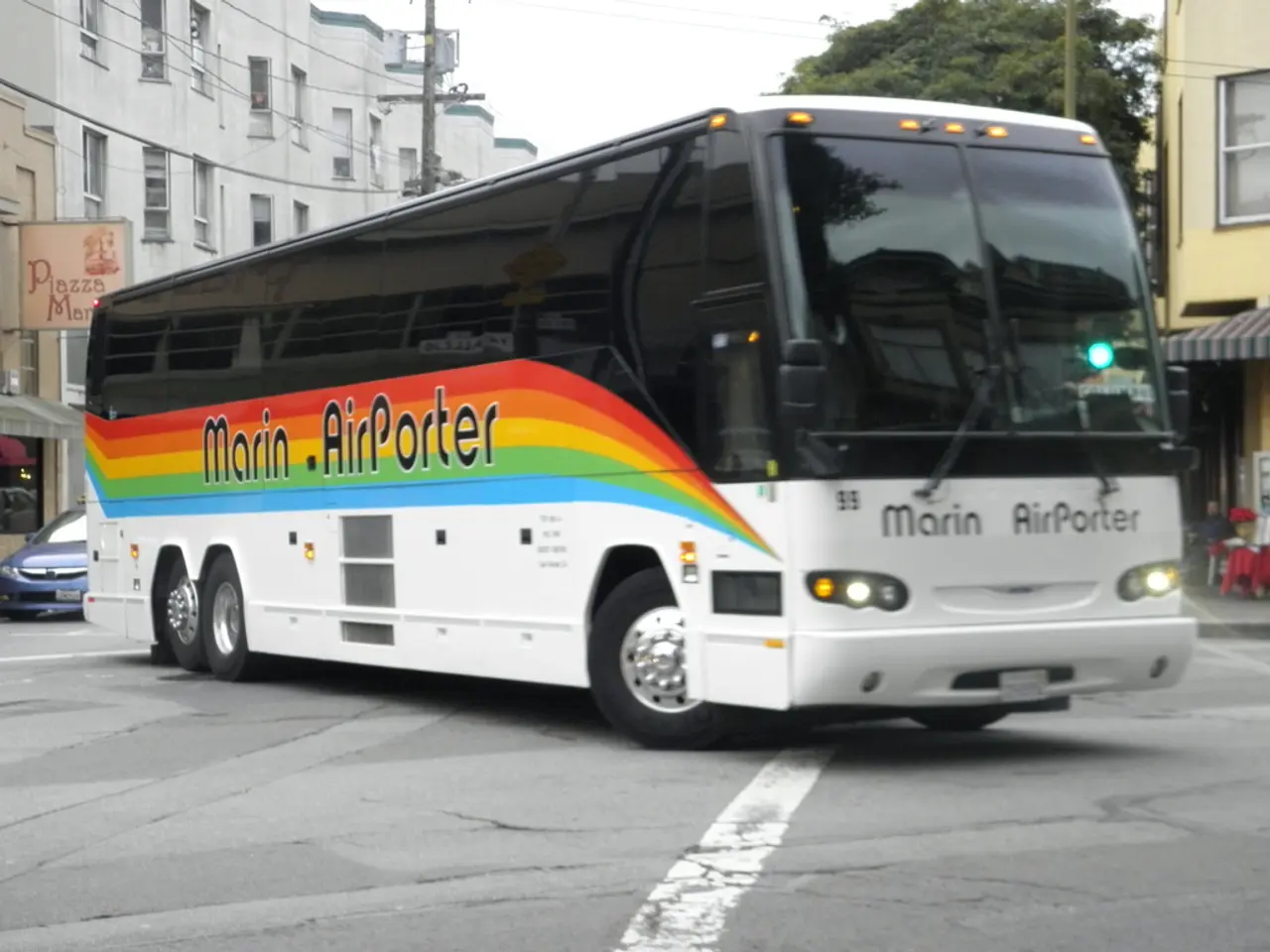Metrobus in Johannesburg adopts contactless card payments instead of cash transactions.
Metrobus, Johannesburg’s second largest municipal bus operator, has recently implemented a new contactless payment system for bus rides, marking a significant shift in how passenger fares are calculated and paid. The move, which began with the introduction of cashless payments in October 2024, aims to modernise and streamline public transport [1].
The previous zonal fare structure has been replaced with a distance-based system, where fares are now calculated based on the actual distance travelled by each passenger [1][2]. This change aims to ensure a "correct value for service rendered" for each trip, potentially making short trips cheaper and long trips more expensive for some routes previously under a flat or zonal rate [2][3].
However, the overall fare increase is small, with the highest fare adjustment being an increase of just R1.26. Yet, some commuters have expressed concerns about the new system being unaffordable, especially those who travel longer distances compared to previous flat or zonal fares [1][4].
A significant concern is the penalty fee of R30 for passengers who fail to tap out at their destination, a charge that is nearly equivalent to the maximum fare for the longest journeys currently offered [2].
The contactless system is intended to reduce fare evasion, improve fare collection accuracy, and modernise public transport [1]. However, it may disproportionately affect commuters who have to transfer buses, as they may face significant increases in their expenses [4].
Tshepo Nathan, corporate strategy and business support manager at Metrobus, has acknowledged the concerns about the transfer increase but did not comment on its impact on low-income commuters [4]. Siyabonga Mdluli, another commuter, is concerned about the impact of the increased cost of living on commuters who have to transfer buses, with some people having to pay over R100 more [4].
In summary, Metrobus’s implementation of the contactless payment system has shifted fare calculations from zones to actual distance, aiming for fairness and operational efficiency, but has also introduced new costs and complexities for passengers, leading to mixed reactions among commuters [1][2][4].
**Key Features:**
- **Fare Calculation:** Based on distance travelled - **Payment Method:** Contactless card (tap-in, tap-out) - **Fare Adjustment:** Up to R1.26 increase; exact fare depends on distance - **Penalty for No Tap-Out:** R30 fee
**Table: Fare Changes**
| Feature | Old System (Zonal) | New System (Contactless) | |-------------------------------|---------------------------|-------------------------------| | Fare Calculation | Based on destination zones| Based on distance travelled | | Payment Method | Cash/old card system | Contactless card (tap-in, tap-out) | | Fare Adjustment Example | Flat/zoned rate | Up to R1.26 increase; exact fare depends on distance | | Penalty for No Tap-Out | None/not specified | R30 fee |
[1] City of Johannesburg, Metrobus Press Release, October 2024 [2] The Star, "Metrobus Introduces New Payment System," July 2025 [3] eNCA, "Metrobus Fare Increase Explained," July 2025 [4] Sowetan Live, "Metrobus Fare Hikes Spark Concerns," July 2025
- The implementation of the contactless payment system by Metrobus, a significant shift in the finance industry's public transportation sector, not only modernizes and streamlines transportation but also aims to reduce fare evasion and improve technology in the industry.
- This digital transformation in payments, which replaced the previous zonal fare structure with a distance-based system, hopes to provide a "correct value for service rendered" for each traveler, potentially making short trips cheaper and long trips more expensive for some routes with a flat or zonal rate.
- Compared to the old system, the new contactless system introduces new costs and complexities for commuters, particularly those who have to transfer buses, potentially leading to a significant increase in expenses that may be unaffordable for some low-income commuters.




